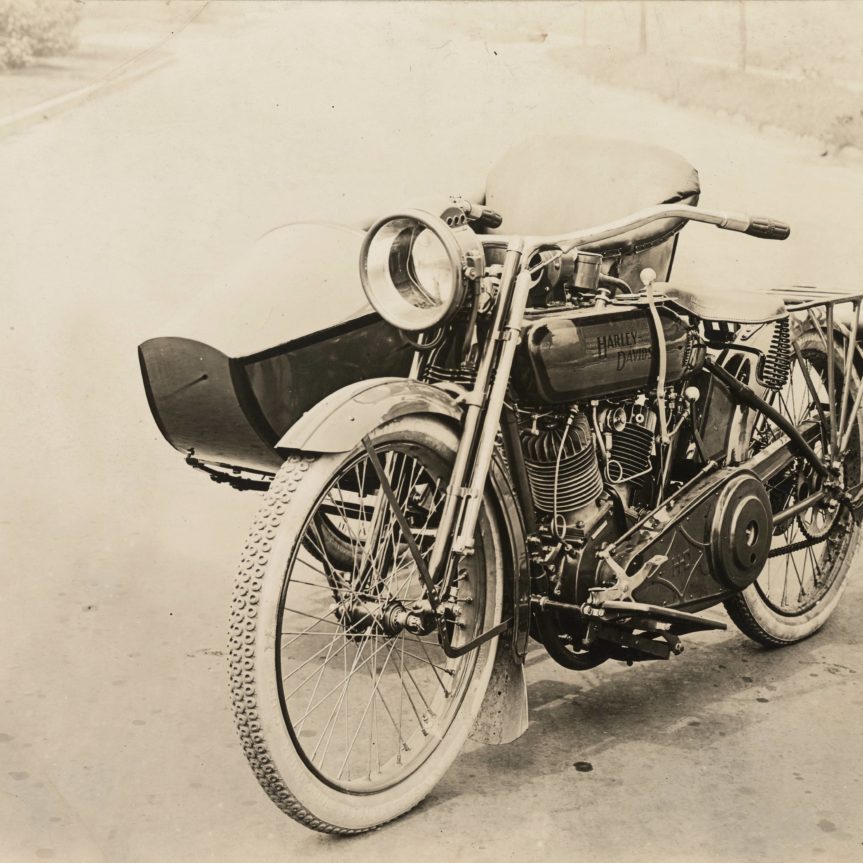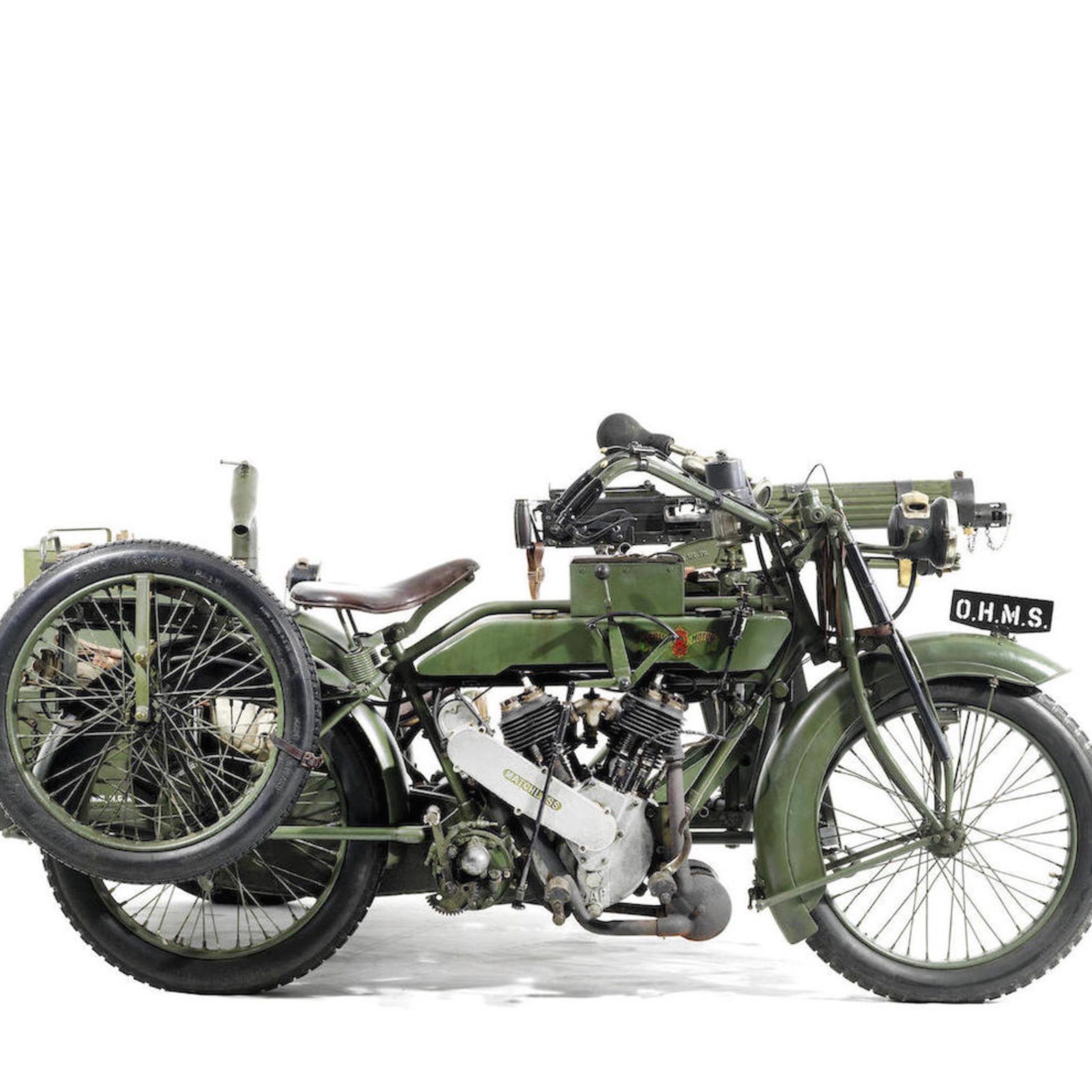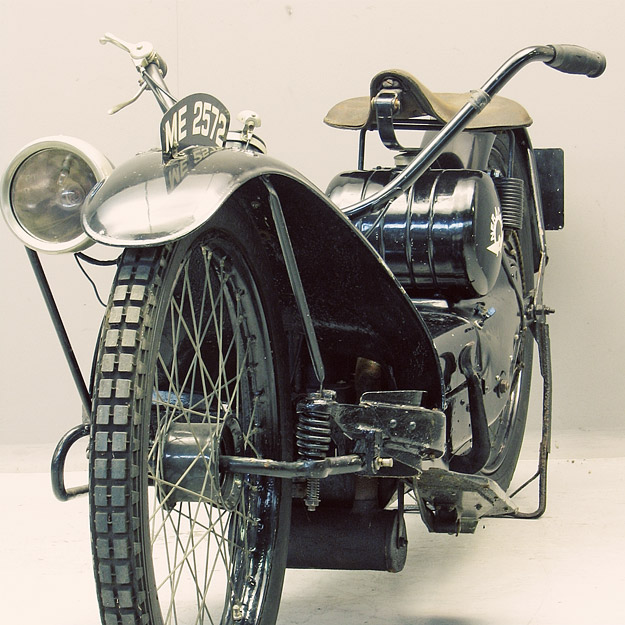The Advent of Motorcycles in Military History
Motorcycles began as consumer experiments in the 19th century. By ww1 motorcycle, they had pivotal military roles.

The Role of Motorcycles in WWI
WWI marked a shift from horsepower to engine power for military mobility. Motorcycles, with their agility and speed, fit the bill perfectly. They tackled rough terrains, carried messages, and transported the injured. Used by the British, German, and American forces, motorcycles quickly became integral to war strategies. They transformed into mobile artillery with mounted machine guns. These bikes were reliable, fast, and versatile, proving essential in the dynamic battlefield of WWI. As the war demanded, manufacturers improved their designs, leading to the iconic and powerful models we remember today.
Key Motorcycle Models of the First World War
Motorcycles were not just machines in WWI; they were wartime icons. Let’s explore some key models.
Harley-Davidson Model J
In 1917, the Harley-Davidson Model J became a US military staple. Its 61 cubic inch F-head motor boasted 16 horsepower. With its olive green paint, it was the emblem of American ruggedness.
Indian Powerplus Big Twin
Outdoing Harley, Indian supplied over 50,000 Powerplus Big Twin motorcycles to the US military. The 61-cubic inch motor delivered 18 horsepower, and the bike carried machine guns and stretchers alike.
Excelsior Model 19
America’s fastest WWI motorbike, the Excelsior Model 19 hit speeds of 100 mph. Its 1000cc engine proved tough on any terrain, and it emerged as a reliable force on the battlefield.
Douglas 2 3/4hp and 4hp Models
Douglas motorcycles were the British Army’s choice for speed and communication. Dispatch riders trusted the 2 3/4hp and 4hp models to deliver messages fast across the front.
Triumph’s Role and the Type H Motorcycle
Triumph’s Type H was a quiet yet quick machine, suitable for stealth missions. Nicknamed the ‘Trusty,’ over 30,000 of these were delivered to the Allies.
Clyno Motorcycles and Their Military Use
The British army widely used Clyno motorcycles with Vickers machine guns. These bikes were integral to the Motor Machine Gun Service, showcasing their versatility in warfare.
Technological Advancements and Performance
The First World War showcased a leap in motorcycle capabilities. Let’s delve into the specific performance traits that proved decisive.
Ruggedness and Reliability on the Frontlines
Motorcycles had to endure harsh war conditions. They faced muddy paths, shell-cratered landscapes, and constant use. Manufacturers engineered bikes to withstand such rigors. Robust frames and engines that could handle rough terrain were critical. This durability made them reliable allies in the heat of battle. The Excelsior Model 19, for example, was famous for its ability to tackle challenging environments.
Speed and Maneuverability
Speed was vital for communication and rapid response. Motorcycles sped through battlegrounds, delivering orders swiftly. Their agility allowed for quick navigation around obstacles. They outmatched any horse-drawn carriage in pace and flexibility. The Triumph Type H was especially known for its quickness and easy handling, vital for covert operations.
Motorcycles as a Tactical Advantage in WWI
The agility and power of motorcycles gave armies a tactical edge during WWI. These machines could traverse the diverse battlefields with ease, whether through mud, over shell-filled ground, or on reconnaissance missions. Beyond their ability to deliver messages and scan terrains, motorcycles served two pivotal functions: transportation of the wounded and provisioning of supplies, as well as acting as mobile units with mounted machine guns.
Transporting the Wounded and Supplies
Quick medical response and efficient supply chains are crucial in war. Motorcycles, often equipped with sidecar stretchers, rapidly evacuated injured soldiers from the front. This speedy intervention could mean the difference between life and death. In addition, motorcycles shuttled ammunition, food, and other essentials to the troops, ensuring that the soldiers had what they needed to sustain their operations.
The Indian Powerplus Big Twin and Harley-Davidson Model J were among those adapted for such crucial roles. Indian motorcycles, with their strong PowerPlus engines, could bear the weight of stretchers and heavy equipment. Harley-Davidson machines painted in olive green carried not just goods and wounded personnel but also a symbol of steadfast American support.
Mounted Machine Guns and Mobile Infantry
Motorcycles also became weapons platforms, with the addition of sidecar-mounted machine guns. These mobile artillery units could quickly move into tactical positions, deliver fire, and retreat before enemy forces could effectively respond. The mounted machine guns made motorcycles a dynamic component of mobile infantry units.
The Clyno motorcycles with Vickers machine gun attachments and Triumph’s reliable Type H bikes, nicknamed ‘Trusty,’ played significant roles in this capacity. They provided the mobility and firepower that foot soldiers alone could not. In an era where rapid movement could turn the tide of battle, the ww1 motorcycle was an innovative and formidable tool in military strategy.
 The Great War’s Impact on Motorcycle Manufacturing
The Great War’s Impact on Motorcycle Manufacturing
WWI drove motorcycle evolution with a surge in demand and technological innovation. The war’s end changed this trajectory.
The Transition of Motorcycle Technology Post-War
After WWI, the motorcycle industry saw rapid tech advancements. Improved engines and frames emerged from wartime learnings. Many features developed for the war, like rugged designs and reliable mechanisms, found their way into consumer bikes. Manufacturers utilized the knowledge gained for making ww1 motorcycle durable and fast. Riding comfort, dependability, and machine power saw noticeable improvements. This transition marked the beginning of modern motorcycling.
Decline of Motorcycle Use After the War
The war’s end led to a stark decline in motorcycle demand. The sudden surplus of ww1 motorcycles and reduced military contracts hit manufacturers hard. Many niche makers shuttered. The public’s interest in motorcycles as a mode of daily transport dipped. Cars became more accessible and overshadowed motorcycles. The ww1 motorcycle era faded, giving rise to new transportation dynamics. Yet the motorcycles that braved WWI trenches remain revered in history.
 Preserving History: Parts and Restoration for Vintage Military Motorcycles
Preserving History: Parts and Restoration for Vintage Military Motorcycles
The legacy of ww1 motorcycles extends beyond their wartime valor. Today, they serve as historical artifacts, highlighting the mechanical ingenuity of the past century. Preserving these machines is both a tribute to their service and a pursuit of historical interest.
Challenges in Vintage Bike Restoration
Restoring a ww1 motorcycle to its former glory involves intricate challenges. Locating authentic parts is a quest, given their rarity. Maintaining the integrity of the machine, while ensuring safety and functionality, demands expertise. Restoration often requires custom fabrication, which must mirror the original components accurately. Mechanically, these older bikes can be temperamental, requiring a nuanced understanding of vintage technology.
Sourcing Parts for Vintage WWI Motorcycles
Finding parts for ww1 motorcycles is no small feat. Enthusiasts and specialists turn to a handful of dedicated suppliers that stock or reproduce vintage components. Swap meets and auctions are other hunting grounds for the scarce pieces. Online communities and forums also serve as valuable resources for sharing information and locating parts. Sometimes, motorcycle museums and private collections provide leads or are willing to part with duplicates to support restoration efforts.
In the hands of devoted restorers, these iconic bikes breathe anew, continuing to tell the stories of their military service long after the war has ended.
Conclusion
The importance of WW1 motorcycles extends far beyond their immediate military applications. They represented a shift in technological capability, inspired a culture that values freedom and adventure, and influenced the design of modern motorcycles. As we reflect on the impact of WW1 motorcycles, we gain a deeper appreciation for how these machines transformed both war and society. They remain a symbol of a revolutionary period in history and a testament to human innovation during challenging times. The legacy of the motorcycles from WW1 continues to resonate, inspiring new generations of riders and enthusiasts around the world.
